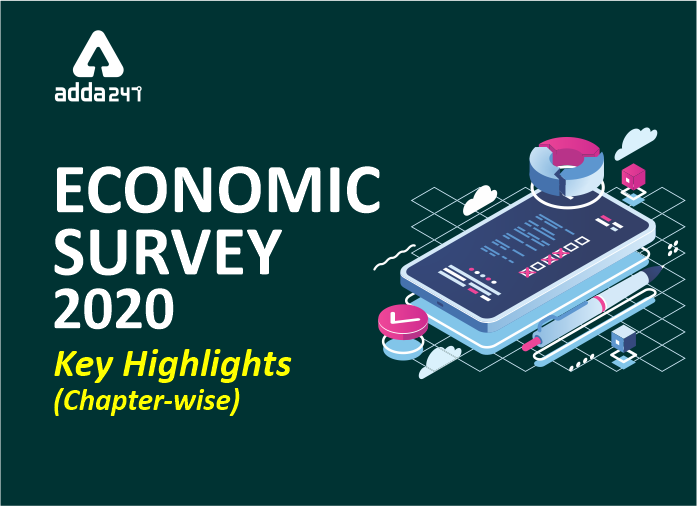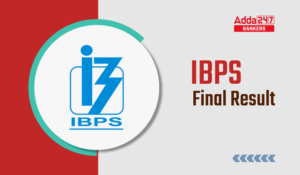Table of Contents
Economic survey 2020: Finally, the wait is over and Economic Survey for the year 2019-20 is presented by Finance Minister, Nirmala Sitharaman in parliament. India’s aspiration to go 5 trillion economy is the base of this survey. The theme of this year’s Economic Survey is “Wealth Creation”.
Economic survey comes in two volumes: Volume I and II. Here are the key highlights of volume I and II
Volume I
Volume I, which attempts to capture ideas that encapsulate “economic freedom and wealth creation”, provides evidence based economic analyses of recent economic developments to enable informed policymaking.
Here are the key highlights for the same:
1. Wealth Creation: The Invisible Hand Supported By The Hand Of Trust
The first and foremost chapter is as per the theme of the survey.
- The Survey records that ideas of wealth creation are deeply rooted in India’s old and rich tradition from Kautilya’s Arthashastra to Thiruvalluvar’s Thirukural, which emphasizes ethical wealth creation as a noble human pursuit.
- Also, it introduced the idea of trust as a public good increases
- Survey suggests that policies framed must certify transparency and effective enforcement using data and technology.
2. Entrepreneurship And Wealth Creation At The Grassroots
- Entrepreneurship is an important strategy to fuel productivity growth and wealth creation and StartUp was the key driver used here.
- As per World Bank’s Data on Entrepreneurship, India ranks third in number of new firms created.
- New firm creation in India increased dramatically since 2014: 12.2 % cumulative annual growth rate of new firms in the formal sector during 2014-18, compared to 3.8 % during 2006-2014 and 1.24 lakh new firms created in 2018, an increase of about 80 % from about 70,000 in 2014.
- Survey suggested that enhancing ease of doing business and implementing flexible labour laws can create maximum jobs and will increase the trust of new entrepreneurs to emerge rapidly.
3. Pro-business versus Pro-markets
- Promoting pro business releases the power of competitive markets to generate wealth, on the one hand, and on the other hand, weaning away from “pro-crony” policy that may favour specific private interests, especially powerful incumbents.
- Despite impressive progress in enabling competitive markets, private policies destroyed value in the economy:
- Equity index of connected firms outperformed market by 7 % a year from 2007 to 2010, reflecting abnormal profits extracted at common citizens’ expense. In contrast to this the index underperforms market by 7.5 % from 2011, reflecting inefficiency and value destruction in such firms.
4. Undermining Markets: When Government Intervention Hurts More Than It Helps
- This chapter makes the case that each department and ministry in the Government must systematically examine areas where the Government needlessly intervenes and undermines markets.
- This does not mean that there should be no Government intervention. Instead, interventions that were apt in a different economic setting may have lost their relevance in a transformed economy. Removing such instances will enable competitive markets and thereby spur investments and economic growth.
- India ranks 79th among 162 countries in the Index of Global Economic Freedom with 108th rank in business regulation showing the evidence of the same.
5. Creating Jobs and Growth by Specializing in Network Products
- By mixing “Assemble in India for the world” into Make in India, India can make a China like labour intensive, export trajectory.
- It can Raise its export market share to about 3.5 % by 2025 and 6 % by 2030 and can create 4 crore well-paid jobs by 2025 and 8 crore by 2030.
- Survey also analysed the impact of India’s trade agreements on overall trade balance: India’s exports increased by 13.4 % for manufactured products and 10.9 % for total merchandise
- Imports increased by 12.7 % for manufactured products and 8.6 per cent for total merchandise.
- India gained 0.7 % increase in trade surplus per year for manufactured products and 2.3 % per year for total merchandise.
6. Targeting Ease of Doing Business in India
- India jumps 79 positions from 142 in 2014 to 63 in 2019 in World Bank’s Doing Business rankings.
- India still streams in parameters like Ease of Starting Business, Registering Property, Paying Taxes and Enforcing Contracts
7. Golden jubilee of bank nationalisation: Taking stock
- Since 1969, India’s Banking sector has not developed efficiently with the growth in the size of the economy.
- At global level, India has only one bank in the top 100, which is State Bank of India ranked 55th.
- The Top bank
- Finance Technology and Legal framework like Insolvency and Bankruptcy Code is suggested as a measure to tackle this situation
8. Financial Fragility in the NBFC Sector
- Problems of NBFCs is rooted from their over-dependence on short-term wholesale funding from the Liquid Debt Mutual Funds that leads to bank-run cases more frequent in NBFC.
- A dynamic health index (Health Score) is framed that captures
these risks and can be used as an early warning to anticipate liquidity crisis in an NBFC. - Policy framers are suggested to use this tool to monitor, regulate and avert financial fragility in the NBFC sector in the survey.
9. Privatization and Wealth Creation
- Strategic disinvestment of Government’s shareholding of 53.29 per cent in HPCL led to an increase of around Rs. 33,000 crore in national wealth showing efficiency gains from privatisation and supporting disinvestment of CPSEs.
- This survey suggest disinvestment of CPSEs in order to Bring in higher profitability, Promote efficiency, Increase competitiveness and Promote professionalism.
10. Is India’s GDP Growth Overstated? No!
- Models that by mistake over-estimate GDP growth by 2.7 % for India post-2011, can also measure wrong GDP growth over the same period for 51 out of 95 countries in the sample. Example being UK, Germany and Singapore.
- Suggestion is for the setting up of 28-member Standing Committee on Economic Statistics (SCES) headed by India’s former Chief Statistician is important. Survey must be taken on board when assessing the quality of
Indian data.
11. Thalinomics: The Economics of a Plate of Food in India
- Average prices of a vegetarian Thali have decreased significantly since 2015-16 across India, though the price has increased during 2019-20.
- As per the data, Affordability of vegetarian Thalis improved by 29 % and Affordability of non-vegetarian Thalis improved by 18 %.
Click Here to Download Vol-I of Economic Survey
Volume II
Volume II reviews recent developments in the major sectors of the economy and is supported by relevant statistical tables and data. This would serve as the ready reckoner for the existing status and policies in a sector
Key features of Volume II
1. State of the Economy
- India’s GDP growth decreased to 4.8 % in H1 of 2019-20 from 6.2% in 2018-19, without a weak environment for global manufacturing, trade and demand.
- World Economic Outlook (WEO) published by IMF has estimated the global output to grow at 2.9 % in 2019, declining from 3.6 %
in 2018 and 3.8 % in 2017 - Ease of monetary policy with the repo rate having been cut by RBI by 110 basis points.
- insolvency resolution process under Insolvency and Bankruptcy Code (IBC) and easing of credit, particularly for the stressed real estate and Non-Banking Financial Companies (NBFCs) sectors and various other factors are going to be helpful in the near future.
- Reform is needed to make the economy strong for 2021.
2. Fiscal Developments
- The fiscal policy 2019-20 was characterized by sluggish growth in Tax revenue relative to the budget estimates.
- The Medium Term Fiscal Policy (MTFP) Statement presented with the Budget 2019-20, pegged the fiscal deficit target for 2019-20 at 3.3 per cent of GDP, which will reduce and attain the targeted level of 3 per cent of GDP in 2020-21, and continue at the same level in 2021-22
- The Central government debt was expected to continue with debt reaching 46.2 per cent of GDP and 44.4 per cent of GDP in 2020-21 and 2021-22, respectively
3. External Sector
- In the first half of 2019-20, India’s external sector gained further stability witnessing improvement in Balance of Payments (BoP) position.
- Current account deficit (CAD) reduced from 2.1% in 2018-19 to 1.5% of GDP in H1 of 2019-20.
- Foreign reserves of US$ 461.2 bn as per 10th January, 2020 is shown in the data.
- At Global trade level, global trade is estimated to grow at 1.0% after having peaked in 2017 at 5.7%. It is estimated to recover to 2.9% in 2020 with recovery in global economic activity.
- India’s merchandise trade balance showed improvement from 2009-14 to 2014-19. The reason estimated is the decline of in crude prices in 2016-17.
- India’s top five partners in trade are USA, China, UAE, Saudi Arabia and Hong Kong this fiscal year as well.
4. Monetary Management and Financial Intermediation
- The repo rate was cut by 110 basis points in four consecutive Monetary Policy Committee meetings in the financial year due to reduced growth and lower inflation rate.
- The Gross Non Performing Advances ratio of Scheduled Commercial Banks has remained unchanged at 9.3 % between March and September 2019 and increased slightly for the NBFC from 6.1% to 6.3%.
- Nifty50 and S&P BSE Sensex indices reached record high closing of 12,355 and 41,952 respectively during 2019-20 as on 16 January 2020.
5. Prices and Inflation
- Consumer Price Index (CPI) inflation enhanced from 3.7 per cent in 2018-19 to 4.1 per cent in 2019-20.
- WPI inflation fell from 4.7 per cent in 2018-19 to 1.5 per cent during 2019-20.
- Food inflation is showing an upward trend mainly backed by rising vegetables, fruits and pulses prices.
6. Sustainable Development and Climate Change
- India is moving forward on the path of implementation of SDG through well-designed initiatives
- Himachal Pradesh, Kerala, Tamil Nadu, Chandigarh are the highest rankers and Assam, Bihar and Uttar Pradesh come under the category of Aspirants category
- India hosted COP-14 of UNCCD which adopted the Delhi Declaration with theme “Investing in Land and Unlocking Opportunities”
- Forest and tree cover of India is increasing and it reached 80.73 million hectare which is 24.56 % of the geographical area of the country.
- India is an enabler of International Solar Allaince
7. Agriculture and Food Management
- The share of agriculture and allied sectors in the total Gross Value Added (GVA) of the country has been continuously declining and Basic Prices for 2019-20 from ‘Agriculture, Forestry and Fishing’ sector is estimated to grow by 2.8 %
- Food Processing Industries sector have an average Annual Growth Rate (AAGR) of around 5.06 %
8. Industry and Infrastructure
- The industrial sector as per Index of Industrial Production (IIP) showed a growth of 0.6 per cent in 2019-20 as compared to 5.0 % during 2018-19
- Report of the National Infrastructure Pipeline Task Force released has projected total infrastructure investment of Rs. 102 lakh crore during the period FY 2020 to 2025 in India.
9. Services Sector
- About 55 % of the total size of the economy and GVA growth.
- Two-thirds of total FDI inflows into India with 38 per cent of total exports.
- Gross Value Added growth of the services sector reduced in 2019-20 as suggested by various high-frequency indicators and sectoral data such as air passenger traffic, port and shipping freight traffic, bank credit etc.
- FDI into services sector has witnessed a recovery in early 2019-20.
10. Social Infrastructure, Employment and Human Development
- Social services expenditure (health, education and others) by the Centre and States as a proportion of GDP increased from 6.2 % in 2014-15 to 7.7 % in 2019-20.
- India’s ranking in Human Development Index improved to 129 in 2018 from 130 in 2017 with 1.34 % average annual HDI growth,
- The share of regular wage/salaried employees has increased by 5% from 18 % in 2011-12 to 23 % in 2017-18.
- A jump of around 2.62 crore new jobs with 1.21 crore in rural areas and 1.39 crore in urban areas in this category.
- Access to health services inter-alia through Ayushman Bharat and Mission Indradhanush across the country has improved.
- Mission Indradhanush has helped in vaccinate 3.39 crore children and 87.18 lakh pregnant women of 680 districts across the country.
- A 10 Year Rural Sanitation Strategy (2019-2029) launched to focus on sanitation under Swachh Bharat Mission.
- Jal Shakti Abhiyan launched to accelerate progress on water
conservation activities in water stressed districts of India.
Click Here to Download Vol-II of Economic Survey
You may also like to read:
- What are Regional Rural Banks? Important Information about RRBs in India
-
Netaji Subhas Chandra Bose’s 123rd Birth Anniversary- Know about the History of a Prolific Leader
Register here to get study materials and regular updates!!



 IBPS Final Result 2025 Coming Out Tomorr...
IBPS Final Result 2025 Coming Out Tomorr...
 Simple Tips to Avoid Common Mistakes In ...
Simple Tips to Avoid Common Mistakes In ...
 Important Topics & Shortcuts for IDB...
Important Topics & Shortcuts for IDB...





